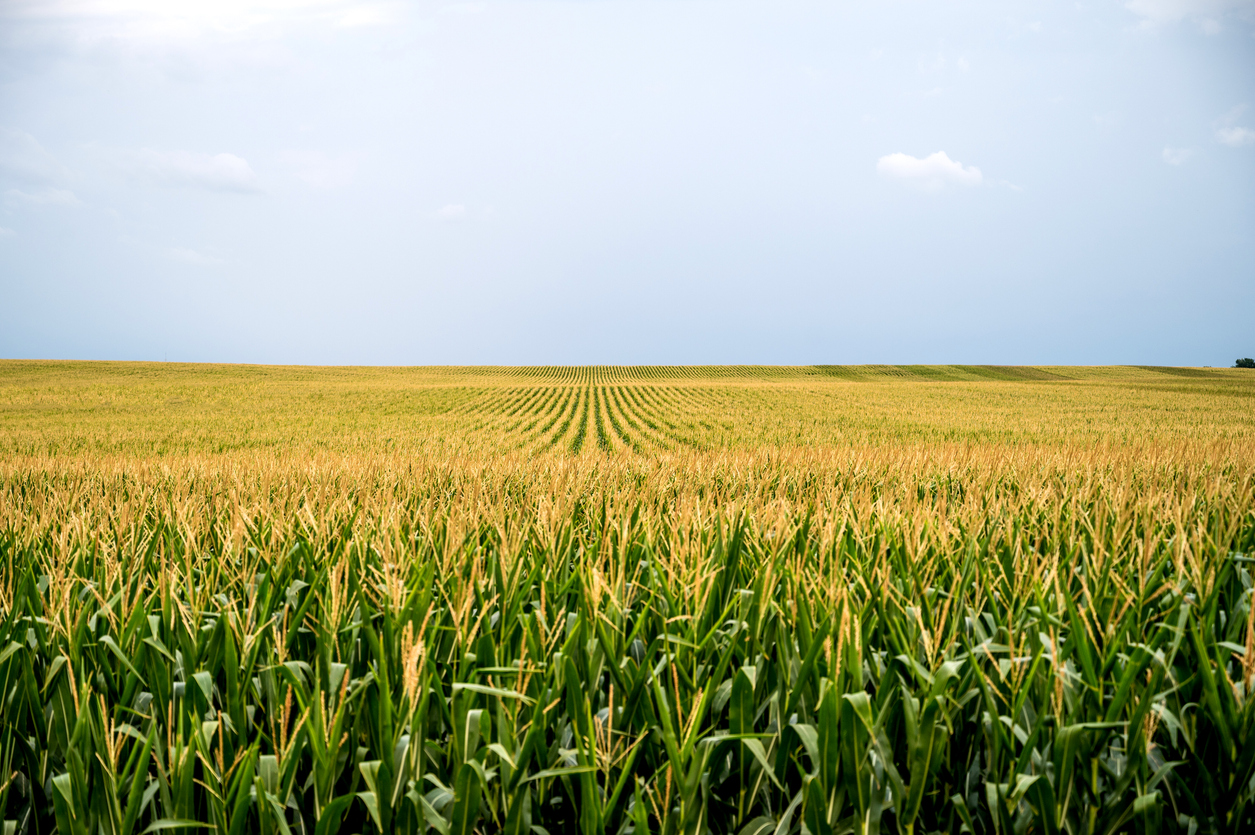Breaking Down Corn Stalks
A common farm problem is how to get corn stalks to break down. Many environmental and soil conditions affect residue breakdown including air and soil temperature, moisture, oxygen, biological activity (microbes and arthropods (shredders)), and different farming practices. Tillage and the addition of fall nitrogen after harvest are common practices that farmers use to speed up residue breakdown. Some farmers feel that the GMO (genetically modified) corn residue is also much slower to break down.
Iowa State University (Dr. Madhi Al-Kaisi) conducted a 3-year trial to test how corn stalks break down. ideas. Researchers used both Bt (Bacteria Thuringiensis) and Non Bt or Non-GMO corn varieties and evaluated three tillage systems: deep tillage, strip till, and no-till systems for three years, in the field and under controlled laboratory conditions. After 12 months in the field, they found no significant differences between Bt and non Bt corn and no differences between tillage system in corn residue break down. The common thought was that tillage would break the corn residue up into smaller pieces and incorporate the corn residue into the soil profile, and it was assumed that these actions allowed the crop residue to break down faster. Tillage and The GMO status of corn had no effect.
Researchers then applied three rates of nitrogen (0, 30, and 60 pounds/acre) to corn residues using 32% UAN at the end of harvest and evaluated decomposition using nylon mesh bags that where evaluated every three months for one year. Corn residue breakdown increased with time but again there was no difference observed due to nitrogen application. It was thought that since corn residue has a high carbon to nitrogen ratio, adding a little extra nitrogen (N) would assist in corn residue break down. The results show that applying N application to facilitate corn residue decomposition is not effective.”
If GMO versus Non-GMO corn, tillage, and nitrogen fertilizer are not major factors in corn residue breakdown, what is the explanation? Researchers found that soil moisture (moisture at field capacity) and warm temperatures (above 500F) are essential factors for microbial activity and residue decomposition. Researchers tested this in the lab and found that at 320F, the rate of corn residue breakdown was similar to field conditions, but at 900F and higher temperatures, the residue breakdown was much faster. Microbial levels double for every 100F increase in temperature. Since this is a biological process, practices that increase soil microbial and biological activity greatly increase residue breakdown.
To increase crop yields, farmers often use several practices that may slow down crop residue decomposition. Late maturing corn varieties are often harvested later in the growing season, when soil temperatures are declining, resulting in slower corn residue breakdown. Fungicides, insecticides, and certain herbicides may depress microbial populations especially the arthropods (shredders) and fungi. Most arthropods like spring tails, mites, beetles, and sow bugs are hurt by insecticides. The shredders break up the corn residue but also help inoculate the residue with beneficial microbes. Negative factors like soil compaction, low soil temperatures, and low soil moisture, and pesticides; reduce biological decomposition.
The soil fungi decompose the lignin and the hard-to-digest soil organic matter found in corn residue. Fungi dominate in slightly acid soils and undisturbed soils (Lavell & Spain, 2005). Fungi are essential in starting the decomposition cycle so that other soil microbes can then process the crop residues into plant available and useable products.
To increase corn residue breakdown, farmers have several options. First, consider using a slightly shorter maturing corn variety so that corn may be harvested earlier and the crop residue breaks down faster. Second, check fungicide, insecticide, and herbicide program to see if these products are having a negative impact on soil biology and soil health. Third, consider planting a cover crop which greatly enhances soil microbial activity and should enhance crop residue breakdown. Cover crops create a “micro-environment” in the soil where all types microbes thrive and changes the soil environment for both temperature and moisture.
A fourth method to increase soil biology is to add manure. Manure applied to a cover crops greatly increases biological activity needed to break down corn stalks. Fifth, consider strip tilling your soybean stubble which will be planted to corn because it may allow fungi levels to rebound, although it is a slow process. Strip tilling soybean stubble ahead of corn planting dries out soil (0.5-1.0 of water lost with tillage) and warms up the soil, which may increase microbial activity. Environmentally, tillage increases soil erosion and fall nitrogen applications have water quality risks. Neither appears to help with corn residue breakdown. Ideally, 80% of your corn residue should be decomposed by spring in healthy soils.
